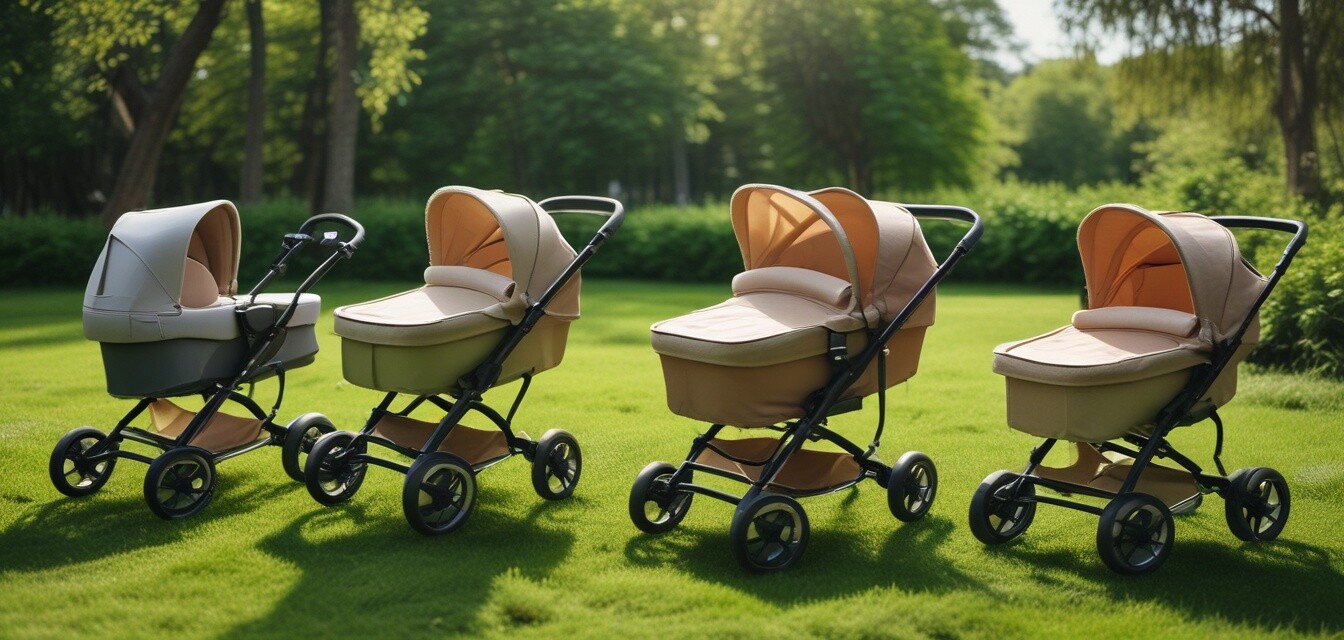
The Sustainable Shift in Stroller Manufacturing
Key Takeaways
- Eco-conscious brands are leading the market by adopting sustainable manufacturing practices.
- Recycled materials and eco-friendly components are becoming a standard in stroller production.
- Manufacturers are increasingly focusing on durability to reduce waste and promote longevity.
- Transparency in sourcing and production is essential for building consumer trust.
- Parents are more inclined to choose brands that align with their environmental values.
In recent years, the stroller manufacturing industry has undergone a significant transformation as eco-conscious brands embrace sustainable practices. These shifts not only affect how strollers are produced but also influence consumer choices, as more parents seek products that align with their values. This article will explore how manufacturers are adapting their processes to produce sustainable strollers, detailing the materials and practices being adopted to meet the demands of environmentally-aware consumers.
Materials Used in Sustainable Stroller Manufacturing
One of the main aspects of sustainability in stroller manufacturing is the use of eco-friendly materials. Here are some of the materials that are taking center stage:
| Material | Description | Environmental Benefits |
|---|---|---|
| Recycled Plastics | Plastic sourced from post-consumer waste, often derived from bottles and containers. | Reduces landfill waste and lowers the need for new plastic production. |
| Organic Cotton | Cotton grown without synthetic pesticides or fertilizers. | Supports sustainable farming practices and helps reduce chemical runoff. |
| Bamboo | A fast-growing plant that can be used for fabric and frame materials. | Highly renewable and biodegradable, reducing the use of non-renewable resources. |
| Aluminum | Lightweight metal used for frames, which can be recycled multiple times. | Durable and reduces the weight of the stroller, which enhances usability. |
Innovative Manufacturing Practices
Beyond materials, companies are also innovating their manufacturing processes to prioritize sustainability. Here are notable practices:
- Energy-efficient Production: Many manufacturers are investing in energy-efficient machinery and production methods to minimize their carbon footprint.
- Waste Reduction Initiatives: Implementing strategies to reduce waste during production, including reusing scraps and optimizing designs to use less material.
- Local Sourcing: Sourcing materials as close to manufacturing facilities as possible to reduce transportation emissions.
- Cradle-to-Cradle Design: Designing products with their end-of-life in mind, ensuring that components can be recycled or repurposed.
Impact on Consumer Choices
With increased awareness of environmental issues, parents are more likely to choose strollers that reflect their commitment to sustainability. Here are some reasons why this shift is critical:
- Informed Choices: Parents today are more informed about the impact of their purchasing decisions, leading to a preference for brands that utilize sustainable practices.
- Trust and Transparency: Companies that openly share their manufacturing processes, sourcing, and sustainability goals tend to build stronger consumer trust.
- Long-term Investment: Eco-friendly strollers often prioritize durability, making them a better long-term investment for parents.
- Social Responsibility: Purchasing sustainable products supports eco-friendly companies that contribute to a healthier planet.
Current Trends and Future Outlook
The trend towards sustainable stroller production is only anticipated to grow. Industry experts believe that the following developments will shape the future of stroller manufacturing:
| Trend | Description | Potential Impact |
|---|---|---|
| Increased Regulations | Governments may introduce stricter regulations on child products regarding sustainability. | Encourages manufacturers to prioritize eco-friendly practices. |
| Consumer Demands | As demand for sustainable products rises, more brands will adopt green practices. | Paves the way for wider industry change and innovation. |
| Technological Advancements | Emerging technologies could lead to new sustainable materials and production methods. | May revolutionize how strollers are made, reducing environmental impact. |
| Global Collaborations | More partnerships between manufacturers and environmental organizations. | Fosters a collective effort towards a greener future. |
As we move forward, staying informed about these trends will be crucial for parents who want to make eco-friendly choices. You can find more insights and expert opinions in our News and Trends section.
Pros
- Supports eco-friendly manufacturing practices.
- Helps reduce waste and pollution.
- Promotes healthier choices for families.
Cons
- Sometimes higher costs compared to conventional products.
- Limited availability in certain markets.
- Variability in product quality based on material sourcing.
Conclusion
The shift towards sustainable stroller manufacturing is not just a trend; it reflects a broader movement towards eco-conscious consumerism. As manufacturers adapt their processes and materials, parents can feel empowered to make informed choices that benefit both their child and the planet. By choosing sustainable strollers, you are directly contributing to a more sustainable future.
Stay Updated
For more information on the latest trends in the baby stroller market, visit our Buying Guides and keep an eye on our Parenting Tips for helpful advice as you navigate your shopping choices.